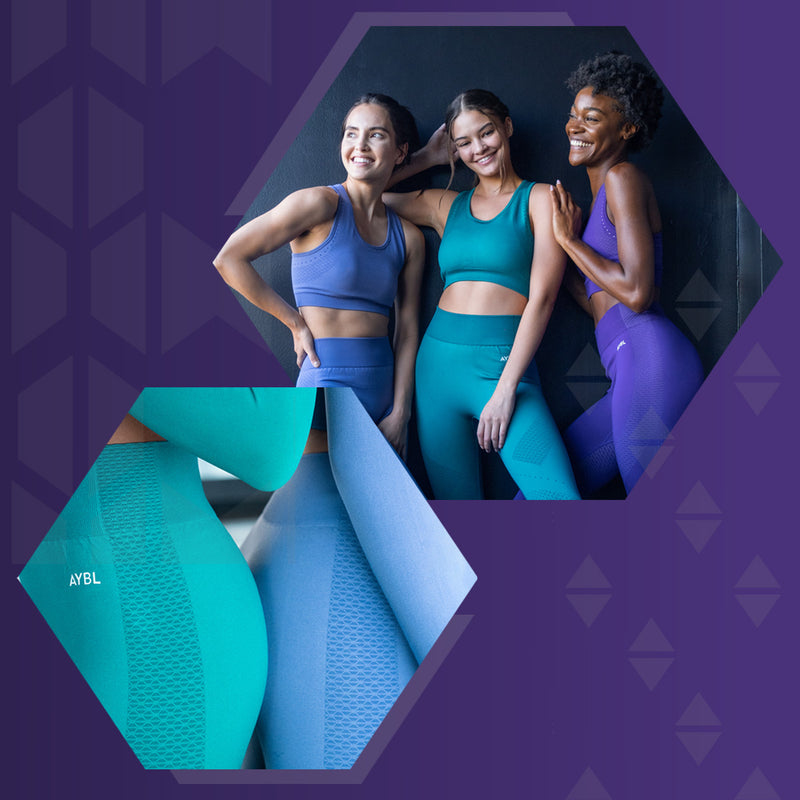
Behind The Collection: Ignite
IGNITE 💥
NOW LIVE
SHOP NOW
We’re always training for harder, better, faster, stronger; both in our workouts and in the clothes we decide to train in.
That’s why our latest collection, Ignite, has been meticulously designed to withstand your training no matter how hard you work or how hard you sweat.
Each silhouette across the collection has been thought out strategically, with designs featuring ventilation details in key heat zones, sweat-wicking capabilities to help draw moisture from the body and soft seamless fabrics for comfort that lasts. A combination which ensures Ignite can handle the intensity of a varied workout.
To discover more about the collection, we caught up with our Senior Womenswear Designer, Charlotte Morgan. After all, nobody knows our ‘fits quite like she does.
CAN YOU GIVE US A BRIEF INTRODUCTION TO IGNITE AND TELL US WHAT INSPIRED THE COLLECTION?
The Ignite Collection is known for two things: its seamless range of motion and its superior breathability, designed to keep you cool through even the toughest of workouts.
This time round, we wanted to create something impactful and powerful - something that is different to anything we’ve ever done before. Therefore, we decided to really hone in on the details and carefully consider how we could tailor them to enhance our community’s training.
With performance at the core of this collection, we’ve included a variety of functional details, including a breathable contrast pattern with visible ventilation holes, to keep you dry and focused, so you can strive towards a better tomorrow.
THE DETAILS
Each of our six designs feature breathable details that you can actually see and feel. This includes intricate geometric shapes which are not only innovative in design, but are innovative in function too. This is because they mimic the breathability of mesh to help you feel refreshed.
The textured detailing and breathable contrast pattern have been perfectly placed in the areas where you heat up most. We’ve also designed it so the detailing subtly contours your figure for an extra confidence boost.
If you look closely, you’ll also notice we’ve continued the pattern up into the waistband of the leggings, which is something we haven’t done before. Add that to the sculpting high waist fit and you’ll instantly feel ready to tackle whatever your workouts throw at you.
WHAT ELSE IS NEW?
This collection includes our first ever seamless full-zip jacket: Ignite Seamless Zip Jacket. Complete with ultra soft fabrications that hug your figure, it’s the perfect layer to throw on top of your ‘fit as we enter the colder months.
We’ve also included our Ignite T-Shirt and Ignite Vest which feature an oversized fit and are available in the same colours as the rest of the collection. Pair with our Ignite Seamless Leggings and Sports Bra or wear over our Ignite Seamless Long Sleeve Crop Top and get ready to strive towards your best hybrid performance yet.
THE COLOURS
Ignite is all about making a statement, which is why we’ve featured bold colours that are guaranteed to make our female community stand out.
And of course, bold colours are worthy of equally bold names, including: Midnight Black, Storm Grey, Hyper Teal, Electric Purple and Flame Blue.
It’s like we said, we wanted to introduce a collection that would create impact and the best way to do that is through striking colours with names people are going to remember. We’ve also reinvented some of our bestselling colours to switch things up.
THE NAME
It’s not just the colours that have been designed to create impact, it’s the name too.
We wanted something that would represent energy and power, especially as we move into the colder, darker winter months, where some people may lose their ‘spark’ or the motivation to train.
Our community is always at the front of our minds during the design process and it was important to us to create a collection which inspires confidence and empowers them to achieve their goals. After all, sometimes all you need is a new ‘fit to look and feel your best.
WHAT IS IGNITE BEST SUITED FOR?
We’d recommend Ignite for your heavy weight sessions, whether that be an upper body workout or leg day.
That being said, our seamless fabrications offer an unmatched level of comfort and performance, making this collection the perfect all-rounder. Rest assured, girls, the thick, durable materials also mean our leggings are squat-proof, so you can move through your sessions with zero distractions.
One thing we’d also note is that our Ignite Seamless Sports Bra offers medium support, so we’d probably recommend an alternative style, such as our Balance V2 Seamless Sports Bra, for more intensive activities like running.
Psssttt… We’ve just dropped five new colours in our Balance V2 Collection. Read more here.
Our all new collection is now live and is waiting for you. So, if you’re yet to bag your Ignite ‘fit, the time to act is now. No, seriously, now.



